August 13, 2023
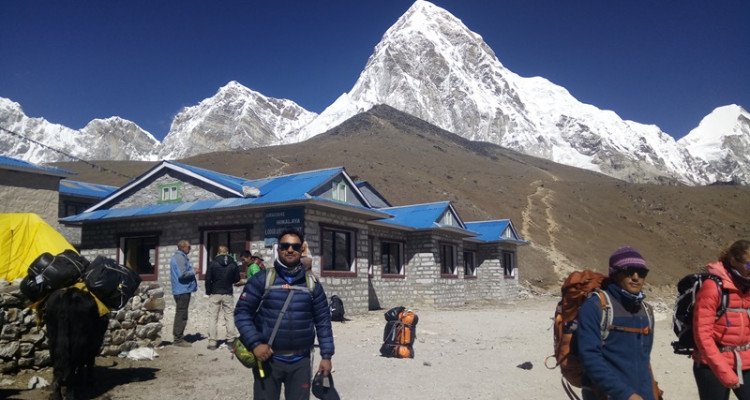
Mention the Everest Base Camp Trek (EBC) in Nepal, and it’s an instant call to action for hikers worldwide. This celebrated Himalayan trail has woven itself into the hearts of countless hiking enthusiasts. For some, it’s an essential pilgrimage for committed trekkers; for others, it’s the chance to stand in the shadow of the world’s loftiest peak. Notably situated at an impressive elevation of 17,598 feet (5,364 meters), the Everest Base Camp in Nepal beckons, and we’ll delve into its soaring heights shortly.
Should the thought of embarking on the Everest Base Camp Trek this year or the next be on your radar, you’re in luck – this guide is crafted to serve your needs. It’s a comprehensive exploration of the iconic trekking route that spans from Namche Bazaar to EBC in Nepal. Covering everything from the optimal time to tackle this venture to the potential hurdles you might face, and the essential trekking gear to ensure a successful journey – this guide leaves no stone unturned. Queries commonly associated with the EBC Trek find their answers here. Let’s plunge in!
The Everest Base Camp Trek promises an adventure unlike any other. It’s not merely a hike; it’s a transformative odyssey. While challenges are part and parcel of the trail, the rewards come in the form of awe-inspiring vistas and an unmatched sense of accomplishment. En route, the Himalayan majesty unfolds, with verdant rhododendron forests, swinging suspension bridges, and heartwarming interactions with the Sherpa community. These encounters add a cultural dimension that enriches the experience.
Selecting the right time to set forth on this journey is pivotal, and the guide will steer you towards the ideal seasons. Balancing favorable weather conditions with manageable trail congestion is key. You’ll gain insights into the unique attributes of each season, empowering you to make an informed decision tailored to your preferences.
The Everest Base Camp Trek isn’t without its share of challenges – altitude acclimatization, demanding ascents, and unpredictable weather are all part of the equation. Yet, with meticulous preparation, the right equipment, and unwavering determination, these obstacles can be surmounted. The guide dissects the essential gear, clothing, and supplies you need to be well-equipped for the journey. This ensures that you’re primed to conquer the trail and savor the experience of reaching the revered Everest Base Camp.
In essence, the Everest Base Camp Trek transcends mere physical boundaries, weaving personal growth with unmatched natural beauty. This guide arms you with the knowledge needed to undertake this extraordinary expedition, facilitating your transition from an aspirational wanderer to a triumphant trailblazer. So, lace up your boots, pack your essentials, and step onto the path that leads to a journey of a lifetime.
It’s clear that you have a deep appreciation for the Everest Base Camp trek and the Everest region in Nepal. The trek to Everest Base Camp is indeed a renowned adventure, attracting travelers from all around the world. Your description captures the essence of the journey, from the excitement of flying into Lukla to the picturesque trails leading to Namche Bazaar.
Nepal’s cultural richness and diversity are indeed captivating. The blend of Buddhism and Hinduism, along with the unique traditions and practices, creates a fascinating tapestry of culture and history. Kathmandu, with its temples, markets, and historical sites, offers a glimpse into the heart of Nepal’s heritage. The country’s allure extends far beyond just the trekking experience, encompassing a wide range of cultural, historical, and natural attractions.
With 18 years of experience in offering the Everest Base Camp trek and exploring the Everest region, your team must have accumulated a wealth of insights and knowledge about the area. This experience likely enables you to provide invaluable guidance and support to trekkers seeking to embark on this incredible adventure. Your passion for Nepal and the Everest region is evident, and it’s clear that you value the unique experiences and perspectives that this journey offers.
If you have any specific questions or if there’s anything else you’d like to share about your experiences or insights related to the Everest Base Camp trek, feel free to let me know!
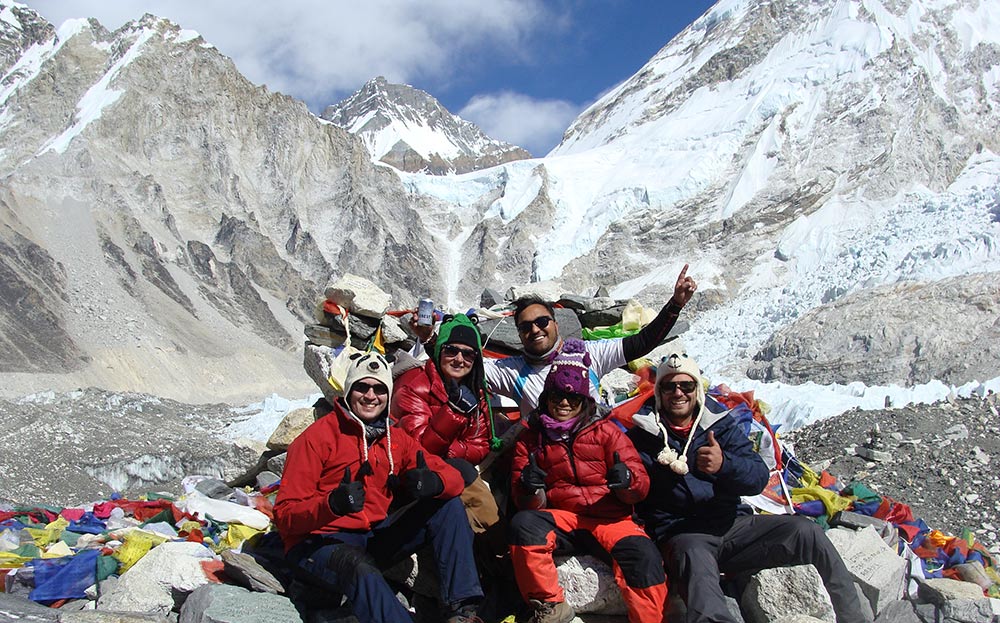
Everest base camp
1. Is Everest Base Camp Trek suitable for beginners?
2. What’s the best time of year to do the Everest Base Camp Trek?
3. How long does it take to complete the Everest Base Camp Trek?
4. What’s the altitude of Everest Base Camp?
5. Do I need to be physically fit to do the trek?
6. What gear and clothing do I need to pack for the trek?
7. How do I prepare for the high altitude and prevent altitude sickness?
8. Should I hire a guide or porter for the trek?
9. What are the accommodation options along the trek?
10. How much does the Everest Base Camp Trek cost, including permits and expenses?
11. What type of food is available during the trek?
12. What’s the difficulty level of the trek and what challenges should I expect?
13. Are there medical facilities available during the trek?
14. Do I need any permits or visas to enter Nepal for the trek?
15. What’s the weather like during the trek?
16. How do I get to the starting point of the Everest Base Camp Trek?
17. Is it possible to do the trek independently, without a tour company?
18. What are the cultural aspects of the trek?
19. Are there any communication facilities available along the trail?
20. What’s the most recommended itinerary for the Everest Base Camp Trek?
The Everest Base Camp Trek can be challenging for beginners due to high altitudes and rugged terrain. It requires good physical fitness and preparation. The trek takes about 12 days, covering around 130 kilometers. Altitude sickness is a concern, so acclimatization is crucial. The weather can be unpredictable, with cold temperatures. Basic lodging and meals are available along the route, but conditions might be basic. Hiring a guide and porter is recommended to enhance safety and comfort. Training beforehand and understanding the risks is important. If you’re a beginner, consider shorter and less strenuous treks before attempting the Everest Base Camp Trek.
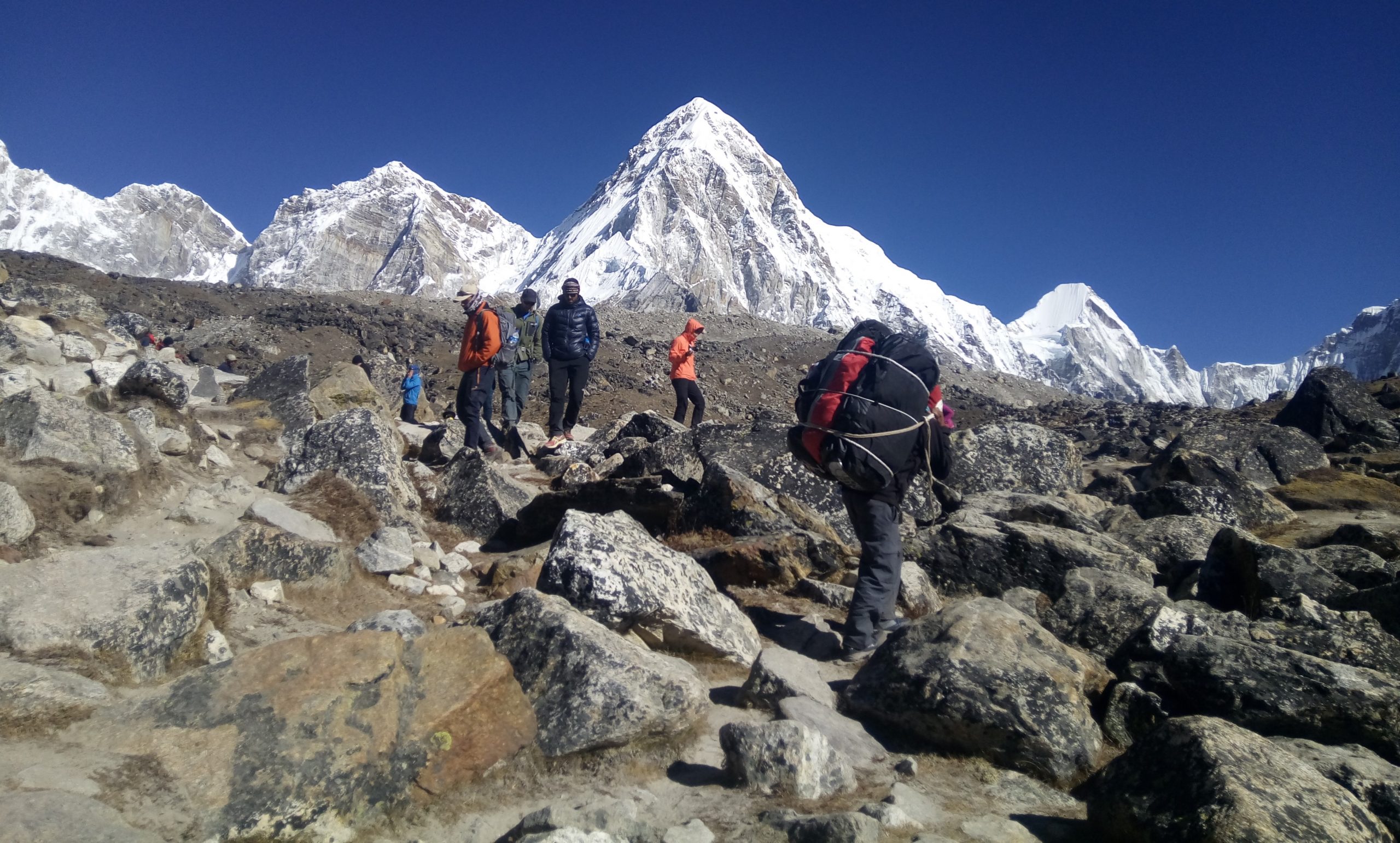
Top 15 Best Treks in Nepal
The best time for the Everest Base Camp Trek is during pre-monsoon (spring) and post-monsoon (autumn) seasons. In spring (March to May), the weather is stable, with clear skies and blooming landscapes. Autumn (September to November) offers similar advantages, with mild temperatures and good visibility. These times provide comfortable trekking conditions and stunning mountain views. However, it’s important to be prepared for crowded trails during peak seasons. Winter (December to February) can be very cold, and some lodges might be closed due to harsh weather. Monsoon season (June to August) is not recommended due to heavy rainfall and potential landslides.
The duration to complete the Everest Base Camp Trek typically takes around 12 to 14 days. The exact time can vary based on factors like your fitness level, acclimatization pace, weather conditions, and rest days. The trek covers approximately 130 kilometers (80 miles) round trip. The journey begins with a scenic flight from Kathmandu to Lukla, followed by trekking through picturesque Sherpa villages, lush forests, and challenging terrains.
To reduce the risk of altitude sickness, the trek includes acclimatization days in places like Namche Bazaar and Dingboche. These rest days allow your body to adjust to higher altitudes gradually. The trek culminates at Everest Base Camp, where climbers prepare to ascend the mighty peak. After spending time enjoying the awe-inspiring scenery and capturing the remarkable vistas of Everest and neighboring peaks, the descent generally takes less time than the ascent.

Reached EBC
It’s important to trek at a comfortable pace to ensure your safety and enjoyment. Some trekkers opt for longer itineraries to allow more acclimatization and flexibility in case of unexpected delays. Hiring a guide and porter can enhance your experience by providing local insights, assistance, and easing the physical load, enabling you to make the most of this remarkable journey.
The altitude of Everest Base Camp is approximately 5,364 meters (17,598 feet) above sea level. It serves as the starting point for climbers aiming to summit Mount Everest and offers stunning views of the surrounding Himalayan peaks. Due to the high elevation, proper acclimatization is crucial for trekkers to prevent altitude sickness and ensure a safe and enjoyable experience
Yes, a reasonable level of physical fitness is important for the Everest Base Camp Trek. The trek involves walking for several hours each day on challenging terrains, including uphill and downhill sections. Prior cardiovascular fitness, leg strength, and endurance will significantly enhance your ability to tackle the trails comfortably. Regular aerobic exercises like walking, jogging, or hiking, along with strength training, can help prepare your body for the physical demands of the trek.
Moreover, the trek reaches high altitudes where the air is thinner, making it harder to breathe. Being physically fit aids in better oxygen utilization and minimizes the risk of altitude sickness. While you don’t need to be an elite athlete, a solid fitness foundation will increase your chances of enjoying the trek and reaching Everest Base Camp with less strain and fatigue.
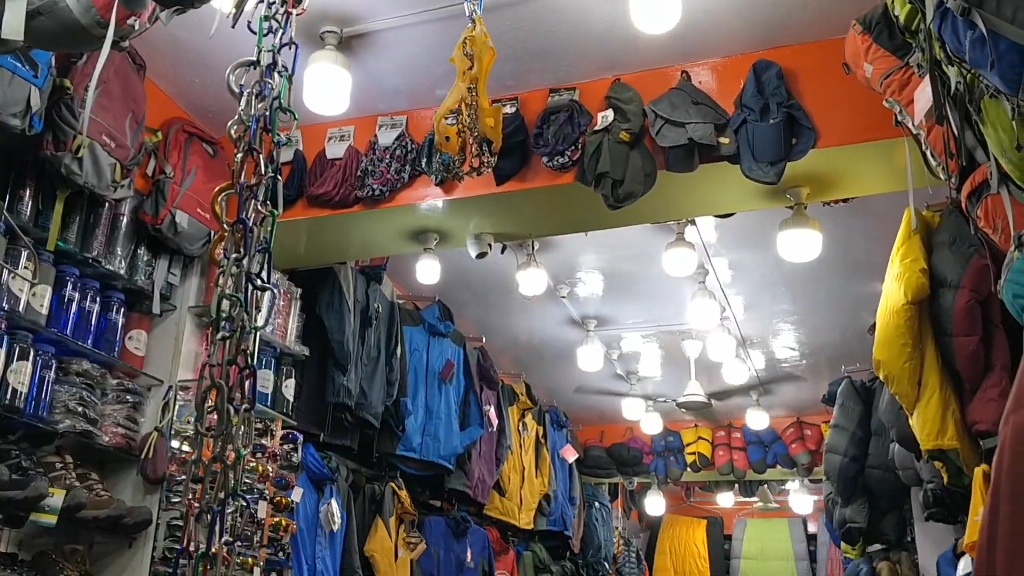
Trekking gears for EBC trek
For the Everest Base Camp Trek, packing appropriate gear and clothing is crucial. Essential items include:
Preparing for high altitude and preventing altitude sickness during the Everest Base Camp Trek requires careful planning and gradual acclimatization. Here’s how:
Gradual Ascent: Ascend gradually to allow your body time to adjust to higher altitudes. Follow recommended trek itineraries with acclimatization days.
Stay Hydrated: Drink plenty of water to stay hydrated, but avoid excessive amounts in a short period. Herbal teas like ginger or mint can also help.
Proper Nutrition: Consume a balanced diet rich in carbohydrates and avoid heavy, greasy foods that can hinder digestion and oxygen intake.
Slow Pace: Walk at a steady and slow pace, especially as you ascend to higher altitudes. This reduces strain on your body and allows for better oxygen intake.
Acclimatization Days: Rest at key points to allow your body to adjust, such as in Namche Bazaar, Dingboche, and Lobuche.
Avoid Alcohol and Smoking: Alcohol and smoking can exacerbate altitude-related issues, so it’s best to avoid them.
Diamox (Acetazolamide): Consult a doctor about taking this medication, which can help prevent altitude sickness. Start a day or two before ascending and continue as advised.
Recognize Symptoms: Be aware of symptoms like headache, nausea, dizziness, and shortness of breath. Inform your guide if you experience any.
Descend if Necessary: If symptoms worsen despite precautions, descend to a lower altitude to recover.
Listen to Your Body: Pay attention to your body’s signals and don’t push yourself too hard. Your safety is the top priority.
By following these steps and being mindful of your body’s response to altitude, you can increase your chances of a successful and enjoyable trek without succumbing to altitude sickness.
Whether to hire a guide, porter, or both for a trek depends on various factors, including your experience level, the difficulty of the trek, the location, your fitness level, and your preferences. Here are some considerations to help you make your decision:

Hiring a Guide:
Hiring a Porter:
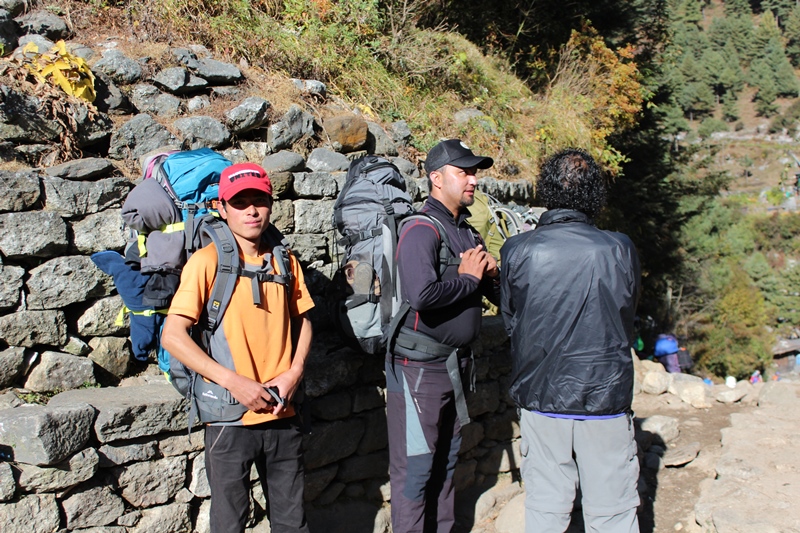
Factors to Consider:
In some cases, trekking agencies offer packages that include guides, porters, or both. These packages can simplify the process and ensure you have the necessary support during your trek. Before making a decision, research the specific trek you’re planning to undertake, consult with experienced trekkers if possible, and consider your own comfort level, safety, and preferences.
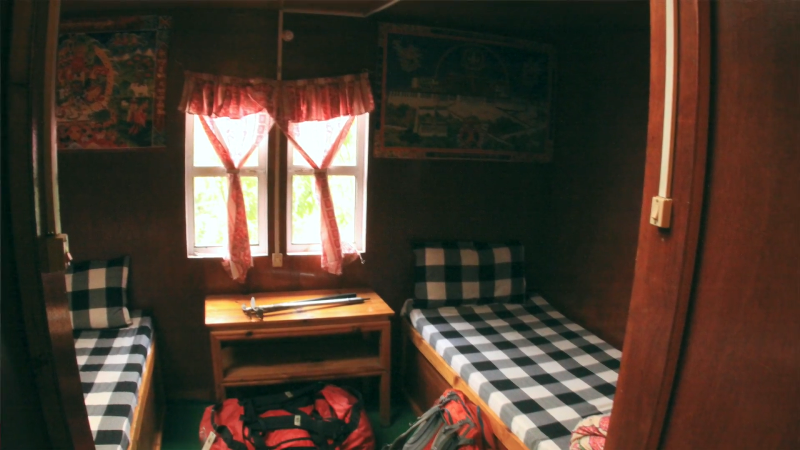
Accommodation options along a trek can vary based on the location and level of development in the area. Common options include guesthouses, teahouses, camping, and lodges. Guesthouses and teahouses are prevalent in many popular trekking regions, providing basic rooms and communal dining areas. Camping is an option in more remote areas, requiring you to carry your own camping gear. Lodges range from rustic to more comfortable, offering amenities like private rooms and attached bathrooms. It’s essential to research the specific trek and its accommodations in advance to prepare adequately and choose the option that aligns with your comfort and experience preferences.
The cost of the Everest Base Camp Trek varies based on factors such as duration, services, and group size. On average, a 12-day package trek from Kathmandu can cost around $1200 per person. This covers permits, accommodations, meals, a guide, and porter services. However, costs can be lower for larger groups due to shared expenses. Additional expenses may include flights to Lukla (the trek’s starting point), trekking gear, and personal expenses. It’s advisable to carefully review package details, inclusions, and reviews from reliable trekking agencies while considering the budget and preferences for a well-informed decision.
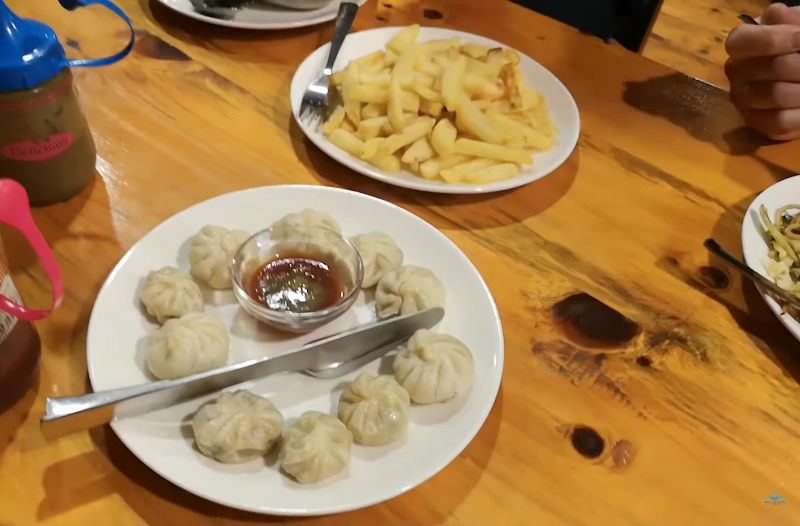
During the trek, you can expect a variety of food options that cater to both local and international tastes. Local Sherpa dishes like Sherpa (Tibetan Bread)bread, Potato bread, T-momo (a type of dumpling), and Syakpa (a noodle soup with meat and rice) offer authentic flavors. Additionally, Normal momo (regular dumplings) are widely available. The menus of teahouses and lodges also offer a range of Western and Asian options, including pasta, rice dishes, sandwiches, soups, and fried rice. Keep in mind that as you ascend, fresh ingredients might be scarcer, so some variety in menu options could decrease at higher altitudes.
The Everest Base Camp Trek is considered moderately to strenuously difficult due to its high altitude and challenging terrain. The trek involves both uphill and downhill segments, as well as potential weather changes. Altitude-related challenges are common, including altitude sickness symptoms such as headache, nausea, and fatigue. Proper acclimatization is crucial to minimize these risks. The trail’s ruggedness, occasional steep ascents, and descents demand a reasonable level of physical fitness. Weather conditions can be unpredictable, especially at higher altitudes. Crossing suspension bridges and adjusting to lower oxygen levels can also be challenging. Being prepared, maintaining a steady pace, staying hydrated, and listening to your body are essential to a safe and successful trek.
Medical facilities along the Everest Base Camp Trek are limited, primarily found in Lukla, Namche Bazaar, and Khumjung. These places offer basic pharmacies and small medical clinics. Khumjung also has a small hospital. However, once you’re on the trail, especially at higher altitudes, medical facilities become scarce. Trekkers are advised to carry their own basic medical supplies, including altitude sickness medication, pain relievers, and first aid items. It’s crucial to be well-prepared, prioritize acclimatization, and have a clear understanding of altitude-related risks. If a medical emergency arises, arranging for evacuation to a lower altitude or a more equipped medical facility may be necessary.
Yes, if you’re planning to trek in Nepal, you will need a visa to enter the country. Most nationalities can obtain a visa on arrival at Kathmandu Airport, but it’s also possible to obtain a visa from Nepali embassies or consulates before you arrive. For specific treks like the Everest Base Camp trek, you’ll need additional permits. These include the Sagarmatha National Park permit, a Trekkers’ Information Management System (TIMs) card, and potentially an entry fee for the Pasang Lhamu Rural Municipality. It’s important to research and prepare these permits and visas in advance to ensure a smooth trekking experience.
The weather during treks in Nepal can vary based on the season and the altitude of the trekking route. Here’s a general overview of the weather conditions you can expect:
Spring (March to May): Spring is one of the popular trekking seasons in Nepal. The weather is mild and gradually becomes warmer as you move into May. Temperatures at lower altitudes are comfortable, with clear skies and blossoming flowers. However, higher altitudes might still be chilly, and you might encounter occasional showers.
Summer/Monsoon (June to August): This season brings heavy rainfall, especially in the afternoon and evening. Trekking during this time can be challenging due to muddy trails, leeches, and the risk of landslides. However, some rain-shadow areas like Upper Mustang or Dolpo might be suitable for trekking.
Autumn (September to November): This is the peak trekking season in Nepal. The weather is generally clear, with stable temperatures and excellent visibility. The days are warm, and the nights can be cool, especially at higher altitudes. This is a great time for trekking as the skies are usually clear, offering stunning mountain views.
Winter (December to February): Winter brings colder temperatures, especially at higher elevations. Daytime temperatures can be pleasant, but nights can be quite cold. Some high-altitude trekking routes might be closed due to heavy snowfall, but lower-altitude treks are still possible. The skies are generally clear during this season.
To reach the starting point of the Everest Base Camp Trek, you have a few options. The most common approach is to take a flight from Kathmandu to Lukla’s Tenzing-Hillary Airport, which is a thrilling and scenic flight. Alternatively, you can fly from Kathmandu to Ramechhap’s Manthali Airport, and then take a connecting flight to Lukla. Another option is to travel overland by taking a jeep from Kathmandu to the town of Salleri and then trekking to Lukla. This last option is a longer and less common route, but it offers a more off-the-beaten-path experience before starting your trek to Everest Base Camp.
As of April 2023, new regulations require trekkers to have a guide while trekking in certain areas of Nepal, including popular routes like the Everest Base Camp Trek. Having a guide is not only mandatory but also enhances safety and ensures a smoother trekking experience. Guides are familiar with the terrain, altitude challenges, and can provide assistance in case of emergencies. They also offer cultural insights and navigation support. While the previous option of independent trekking existed, these regulations aim to enhance trekker safety and contribute to local communities through increased employment opportunities for guides.

The Everest Base Camp Trek offers rich cultural experiences. The region is predominantly inhabited by Sherpa people, with a significant Tibetan influence in their culture. The Sherpas are known for their warm hospitality, Buddhist traditions, and resilient mountaineering spirit. The Mani Rimdu festival, celebrated with vibrant masked dances, showcases their religious devotion. Sherpas are often involved in hospitality and climbing-related activities. In the lower regions, Tamang and Rai communities contribute to the trekking industry through portering and farming. These diverse cultural interactions along the trek provide insights into the local way of life and create a unique cultural tapestry for trekkers to explore.
Yes, there are communication facilities available along the Everest Base Camp trek route. Until Everest Base Camp, you can generally find mobile phone signal coverage at various points along the trail, although signal strength might vary. Additionally, many lodges along the trekking route offer Wi-Fi services for a small fee. While the connectivity might not be as robust as in urban areas, these facilities provide trekkers with the means to stay in touch with family and friends and share their experiences through messaging and social media. Keep in mind that remote areas might have limited or no connectivity, so it’s wise to be prepared for occasional communication gaps.
Certainly, here’s a recommended outline itinerary for the Everest Base Camp Trek:
Day 1: Fly to Lukla (2,860m) and trek to Phakding (2,610m)
Day 2: Trek to Namche Bazaar (3,440m)
Day 3: Acclimatization day in Namche Bazaar
Day 4: Trek to Tengboche (3,870m)
Day 5: Trek to Dingboche (4,360m)
Day 6: Acclimatization day in Dingboche
Day 7: Trek to Lobuche (4,940m)
Day 8: Trek to Gorak Shep (5,170m), then to Everest Base Camp (5,364m)
Day 9: Hike to Kala Patthar (5,545m) and descend to Pheriche (4,240m)
Day 10: Trek to Namche Bazaar
Day 11: Trek to Lukla
Day 12: Fly back to Kathmandu
Please note that this is a general outline, and the duration of the trek can vary based on factors like acclimatization needs, weather conditions, and personal preferences. It’s crucial to follow a proper acclimatization schedule to ensure your safety and enjoy the trek to its fullest.
Recommended topics to read before heading to Everest Base camp Trekking: